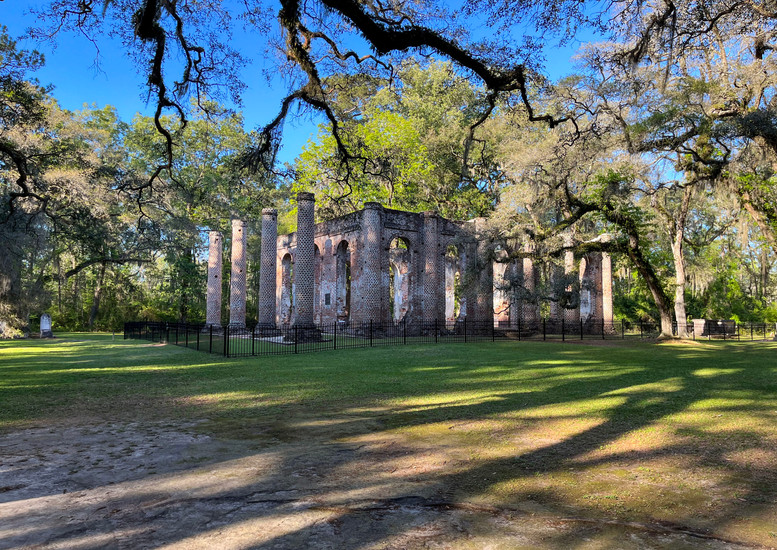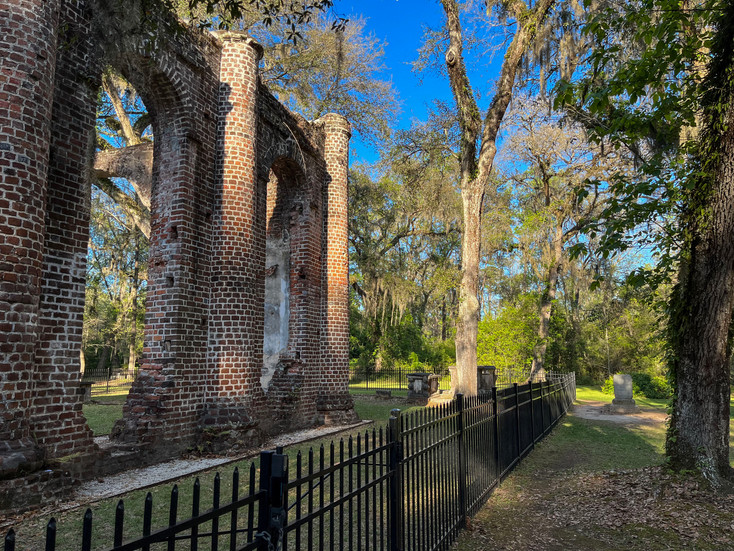Old Sheldon Church Ruins
- Tim Murphy
- Mar 3, 2024
- 2 min read
The esthetic ruins of Old Sheldon Church—situated serendipitously beneath moss-covered canopies in Beaufort County, South Carolina—emulate celestial intrigue and retrospective melancholy analogous with the annals of Antebellum society. According to the National Register of Historic Places, Sheldon Church (c. 1745 – 1753) was America’s earliest example of “temple-form” Neoclassicism, prototypical of Greek Revival architecture popularized during the early to mid-nineteenth century. When religious services commenced in 1757, contemporary congregants lauded their house of worship as “the finest country parish” in Carolina.

The church’s construction was primarily financed by William Bull I, a wealthy planter and influential colonial councilman. Supplementary to his distinguished political career—which culminated in a seventeen-year tenure as South Carolina’s Lieutenant Governor—Bull previously served as a provincial militia officer, fighting in the Tuscarora and Yamasee Indian Wars. He was also a master surveyor, whose expertise was integral to the founding of Savannah, Georgia, in 1733. Bull died on March 21, 1755, and was interred before the altar inside the newly-constructed meetinghouse. Though originally established as Prince William’s Parish—denominated after William, Duke of Cumberland, son of King George II—the name “Sheldon Church” was later adopted to honor the Bull family, whose adjacent plantation and ancestral English estate were both called “Sheldon.”
During the Revolutionary War, Sheldon Church was a sanctuary for Patriot affairs. Continental forces routinely drilled on parish grounds and utilized the Bull family vault to conceal weapons and ammunition. These “treasonous activities” ceased in May 1779, when British General Augustine Prevost set the church ablaze. The once-opulent temple, reduced to a hollow shell of burnt brick, was left untended for several decades thereafter. In 1826, local Episcopalians reorganized Prince William Parish and resurrected the church from its extant edifice. Despite this energetic rejuvenation, the ravages of war would ultimately triumph.

The Civil War was America’s most destructive conflict; its path of devastation did not spare Old Sheldon Church. It was widely assumed that Union soldiers torched the religious house during General Sherman’s Carolina Campaign in January 1865. However, recently discovered primary documents refute this notion. In a letter dated February 3, 1866, Milton Leverett—son of Reverend Charles Leverett, the last rector of Sheldon Church—wrote that “Sheldon Church not burn’t [sic]. Just torn up in the inside, but can be repaired.” This contemporary observation bears credence that Sheldon Church was structurally sound following the Union army’s departure. Its dilapidated appearance may be attributed to scavenging locals who pilfered the property for salvageable building materials. Subsequent years of neglect weathered away any remaining plaster and wooden structural elements.
The Old Sheldon Church Ruins were entered into the National Register of Historic Places on October 22, 1970. They remain privately owned and maintained by the Parish Church of St. Helena, located in Beaufort, South Carolina. Picturesque and hauntingly serene, the vestiges of Old Sheldon Church endure in silent stoicism—a tangible casualty at the crossroads of war.
For more information on Sheldon Church, visit The Forgotten South, Roots and Recall, South Carolina Picture Project, Abbeville Institute, Reconstructing Reconstruction, South Carolina Lowcountry, EatStayPlay Beaufort, and Architectural Afterlife





























